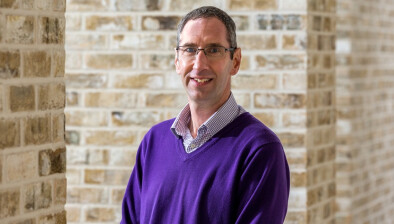Iain Wardrop: Blue light services building back
Iain Wardrop, associate director working in the Scottish Futures Trust’s Asset Strategy team, reveals how public sector organisations are increasingly looking to better utilise their buildings.
Iain Wardrop
Across Scotland’s public sector, there is an ever-growing focus on ‘place’ which requires a ‘one public sector’ approach. This approach looks at how public land, and in particular buildings, can be used collaboratively to deliver joined-up services, achieve better outcomes for communities, secure efficiencies, and contribute to economic growth.
With this focus, an ambitious programme is being rolled out to increase the number of shared stations across the emergency services and decrease the number of single occupiers in buildings, thereby supporting efforts to make Scotland’s places more resilient.
With well over 35,000 police, fire and ambulance officers and staff working out of more than 800 buildings, there are significant service delivery and financial advantages to be had by Scotland’s emergency services being co-located where there is both the right opportunity and where operationally sharing will drive increased benefit to communities.
Traditionally, villages, towns, and city neighbourhoods had separate local emergency stations. However, this spread of property in some locations does not now best support how the three emergency services operate today, for example in locations that are rural or very remote.
Sharing space increases opportunities for joint training and learning from each other. Furthermore, sharing property, and thereby having a smaller overall building estate, helps reduce carbon emissions and operational running costs.
As an example, Police Scotland’s Estate Strategy aims to transform its estate into one which is modern, flexible, and fit for future policing. Police Scotland is transforming its estate away from one that has traditionally been largely ‘standalone’ in more than 90% of its buildings, to one where officers and staff are increasingly co-located, not only with other emergency services, but also with a range of other partners across the wider public sector.
The Scottish Ambulance Service’s Estate Strategy aims to provide an estate that is fit for purpose, flexible and in the correct location to be able to respond to those in need, focusing on collaboratively working within communities.
Similarly, the Scottish Fire and Rescue Service is considering how to modernise its estate from one where the number and location of stations has not changed much since regional services were introduced in the late 1940s.
During 2021, Police Scotland co-located two of its local police stations with Kirkcudbright and Lesmahagow Fire Stations, and the Scottish Ambulance Service joined Scottish Fire and Rescue Service in Bo’ness and Castlemilk.
Kirkcudbright Police local area commander, Chief Inspector Lex Baillie said: “One of the key objectives of our estate strategy is to co-locate and collaborate more with our emergency service partners, enabling joint responses and quicker, better outcomes for the public.”
In Bo’ness Clair Wright, Scottish Ambulance Service area manager for West Lothian, said: “We’re delighted to have moved to this new base alongside our emergency services’ colleagues at the Scottish Fire and Rescue Service. This move has ensured we continue to provide the very best care to patients in these communities, as well as being a great new base for our staff.”
In Castlemilk, Roddie Keith, Scottish Fire and Rescue Service Local Senior Officer for Glasgow said: “This is an excellent opportunity for us to further consolidate an already strong working relationship between Scottish Fire and Rescue Service and the Scottish Ambulance Service. Co-location of services brings a number of benefits for our organisations, but particularly in terms of the opportunities for regular joint working and interaction, which will benefit the local community. We have welcomed our Scottish Ambulance Service colleagues into Castlemilk Fire Station.”
In June 2021, this initiative resulted in a trio of co-locations when ambulance crews began to share space with fire colleagues in fire stations in Penicuik, and in Crewe Toll and Sighthill in Edinburgh.
Currently there is only one tripartite emergency services station in Scotland; the police, fire, and ambulance service all share a building in Tomintoul in the North East of Scotland.
The Programme is supported by public sector infrastructure body, the Scottish Futures Trust working alongside property and operational teams from Police, Fire, and Ambulance services. The partnership approach extends beyond sharing space, where the organisations do not charge each other rent just a share of maintenance and utility bills.
There are now 37 stations in Scotland where two of the three emergency services share space, and with a strong pipeline of co-location projects being progressed, this number looks set to rise.

















